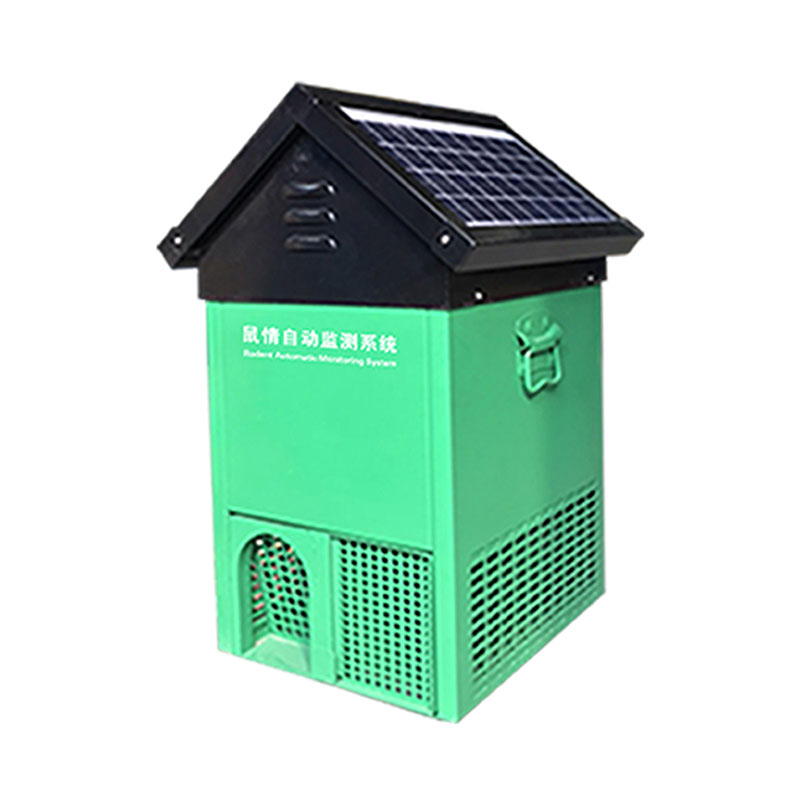Tianqiong Sensor IOT Technology Co., Ltd
Sales Manager:Ms. Emily Wang
Cel,Whatsapp,Wechat:+86 15898932201
Email:info@fengtutec.com
Add:No. 155 Optoelectronic Industry Accelerator, Gaoxin District, Weifang, Shandong, China

Sales Manager:Ms. Emily Wang
Cel,Whatsapp,Wechat:+86 15898932201
Email:info@fengtutec.com
Add:No. 155 Optoelectronic Industry Accelerator, Gaoxin District, Weifang, Shandong, China
time:2025-11-21 10:35:49 source:Weather Station viewed:6 time
Rat Bait Station utilizes the Internet of Things (IoT) and intelligent recognition technology to achieve 24/7 rodent activity data collection and remote control management.
Rat Bait Station is a comprehensive platform centered on an IoT architecture, integrating sensor networks, machine vision, and big data analysis. The system continuously collects rodent activity data through intelligent terminals deployed in areas such as farmland, warehouses, and equipment rooms, and transmits the information to a cloud-based management interface using remote communication technology. Its core functions include real-time monitoring, intelligent identification, density assessment, and early warning intervention, supporting precise decision-making in rodent control.
The system's technical composition relies on the collaboration of multiple types of hardware and algorithms. Monitoring terminals are typically equipped with infrared sensors, ultrasonic detectors, or biosensors to capture rodent movement, weight, or sound signals. The image acquisition module records rodent characteristics using 2-20 megapixel cameras, and then classifies the species (e.g., brown rat, house mouse) based on deep learning models. The communication module supports 2G/3G/4G networks or LoRaWAN protocols to send data to the cloud platform. The power system often uses a combination of solar panels and batteries to ensure long-term operation in the field. The management interface provides heat maps, statistical reports, and mobile phone alert push functions.
In terms of monitoring mechanisms, the system achieves 24/7 automated operation. Infrared detection units trigger counting when rodents enter traps; weighing sensors record individual weight changes; and intelligent trapping devices control rodent entry and exit through a one-way door structure. The platform establishes a rodent density prediction model by analyzing historical data and environmental parameters (such as temperature and humidity). For example, in the Qinghai Plateau agricultural area, a mathematical model was constructed using 41 monitoring points, correlating underground rodent activity with climatic factors.
This type of system has been applied in various scenarios. In agriculture, it guides the timing of bait placement by monitoring rodent density dynamics, reducing crop losses; in unattended equipment rooms, non-toxic trapping devices are used to avoid the need for immediate intervention; and grassland patrol systems combine mobile units and Zigbee communication to achieve large-area path planning and rodent burrow location. In urban environments, the system uses heat maps to mark rodent aggregation areas, assisting public health teams in targeted rodent control resource allocation.
The advantages of Rat Bait Station lie in its efficiency and sustainability. Compared to traditional manual inspections, remote monitoring reduces the manpower required for on-site inspections by 80%; the real-time alarm mechanism shortens response time from days to hours; and long-term data accumulation facilitates regional rodent pest trend analysis, such as the discovery of a bimodal seasonal pattern in rodent density through 9 years of monitoring in the military camp of the Lanzhou garrison. Furthermore, precise baiting reduces the impact of chemical agents on non-target organisms.

A School Weather Station is a comprehensive device established on campus that can automatically, continuously, and in real-time observe and record various meteorological elements. Composed of sensors, data loggers, power supply systems, communication modules, and data display platforms (such as camp...
The 7-element Portable Weather Station can real-time monitor seven key meteorological elements: wind speed, wind direction, air temperature, humidity, atmospheric pressure, illumination, and optical rainfall. Monitoring wind speed and direction helps understand air flow conditions, which is of great...
In scenarios such as ventilation and air conditioning systems and industrial pipeline exhaust, the air velocity in the air duct is an important parameter for measuring the operating status of the system. When the air velocity is too high, it may lead to increased energy consumption, greater pipeline...
An ultrasonic weather station is a modern meteorological monitoring device designed based on the principles of ultrasonics. It measures atmospheric parameters to provide real-time and accurate weather data for environmental monitoring, agriculture, urban management, and other fields. Compared to tra...